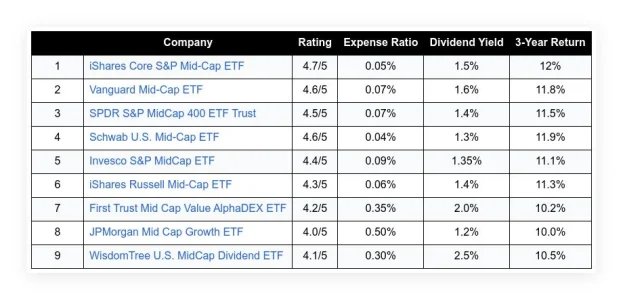In the 2010s, the startup landscape was dominated by SaaS—software companies that promised to disrupt industries with scalable, cloud-based solutions. Venture capital dollars flowed into these businesses as fast as they could be coded. But the tides are shifting. While software remains crucial, today’s most ambitious entrepreneurs aren’t just writing code—they’re tackling some of the most complex hardware challenges across industries like manufacturing, defense, robotics, and space exploration. And venture capital is following them.
One of the companies at the forefront of this hardware revolution is Brooklyn-based Nanotronics, an advanced manufacturing firm backed by Peter Thiel’s Founders Fund that’s reimagining how AI and automation can transform factory floors. In a recent conversation, CEO Matthew Putman shared how his early fascination with the Star Trek “Replicator”—a device that could materialize anything from thin air—inspired his mission to create the most efficient, waste-free system of production ever devised, starting with semiconductors.
“Manufacturing has always been about transformation,” Putman explained. “Our goal is to bring that transformation to a new level by integrating AI and automation in ways that were previously unimaginable.”
Revitalizing U.S. Manufacturing
By combining cutting-edge AI with robotics and nanosensors, Nanotronics is working to revitalize U.S. manufacturing and ensure the country remains competitive on a global scale. The company’s AI-driven solutions streamline production, enhance precision, and reduce costs, all while enabling industries to tackle the complexities of modern manufacturing head-on.
Their newest product, the Cubefab, isn’t just an AI system for factories; it is a literal factory designed for the Age of AI. “Cubefab represents a new paradigm in manufacturing,” Putman said. “It’s a modular system controlled by an AI nerve center, capable of being configured to produce everything from computer chips to pharmaceuticals.”
Putman is one of numerous founders who bypassed SaaS and focused on tough and expensive hardware challenges. This new crop of hardware founders has collectively raised billions in the past few years, and they’re shaping the future of technology in significant ways.
Nanotronics is among many companies in this new class of technology
Another example is Anduril Industries, founded by Palmer Luckey, the visionary behind Oculus. Anduril is building advanced autonomous systems for national defense, blending software expertise with groundbreaking hardware development to create integrated systems that enhance military capabilities. Their mission is to “rebuild the arsenal of democracy” and solve the critical defense challenges that software alone can’t address.
Hadrian also contributes to this hardware renaissance by addressing bottlenecks in the aerospace and defense industries. By building highly automated precision component factories, Hadrian is revolutionizing the production of parts for rockets, satellites, and drones—laying the foundation for faster, more efficient space exploration and national security efforts.
This focus on hard tech is driven by the realization that software alone can’t solve all the world’s most pressing problems. Whether they’re building the next generation of autonomous defense systems, revolutionizing factory automation, or even manufacturing in space—like Varda Space Industries, which pioneers orbital material processing—these companies are reshaping the physical world in ways that software startups cannot.
For companies like Nanotronics, this shift toward solving complex hardware challenges is as much about national competitiveness as technological advancement. After years of watching American manufacturing plants close and jobs move overseas, Nanotronics is leading the effort to bring advanced manufacturing back to the U.S., empowering industries to produce high-quality goods more efficiently.
“Revitalizing manufacturing in the U.S. isn’t just about economics; it’s about innovation,” Putman emphasized. By bringing production closer to home, we can iterate faster, innovate more freely, and maintain control over critical technologies.
Hardware renaissance
This hardware renaissance marks a dramatic change in how venture capital is deployed. VCs were laser-focused on SaaS companies in the last decade because they offered high margins, fast growth, and easy scalability. But now, investors are betting on entrepreneurs who aren’t afraid to tackle enormous hardware problems that demand a longer horizon and deeper expertise. They’re backing companies like Nanotronics, Anduril, and Solugen, a firm that’s revolutionizing chemical manufacturing through a fusion of synthetic biology and artificial intelligence.
The common thread among these companies is their interdisciplinary approach. They blend software, robotics, materials science, and AI into solutions that unlock new industry possibilities. Disrupting with code alone is no longer enough—these ventures are reshaping the world by building tangible, functional, and necessary things for the future.
And the impact isn’t just in national defense or manufacturing; it’s widespread. Standard Bots, for instance, is making AI-powered robotic arms accessible to industries that never thought advanced robotics were within reach. Monumental Labs is changing the face of architecture by using AI-driven robotic systems to reduce the cost of ornate stone structures.
For entrepreneurs looking to capture the attention of today’s VCs, the message is clear: SaaS is no longer the only game in town. The future is being forged by solving hardware challenges—especially those at the intersection of AI, robotics, and manufacturing. As venture dollars flow into these spaces, it’s becoming apparent that the companies solving the hardest problems will also create the most value in the coming decade.
Nanotronics and its peers are proving that the most exciting innovations today are rooted in hardware. They’re not just imagining a digital future—they’re building the future, one factory, one robot, and one groundbreaking invention at a time. They’re reshaping industries, solving critical global challenges, and making hardware cool again.
“At the core, we’re problem solvers,” Putman concluded. “We see challenges in the physical world, and we apply the best technology to address them. That’s where true innovation happens.”
Featured Image Credit: Photo by Ivan Samkov; Pexels













